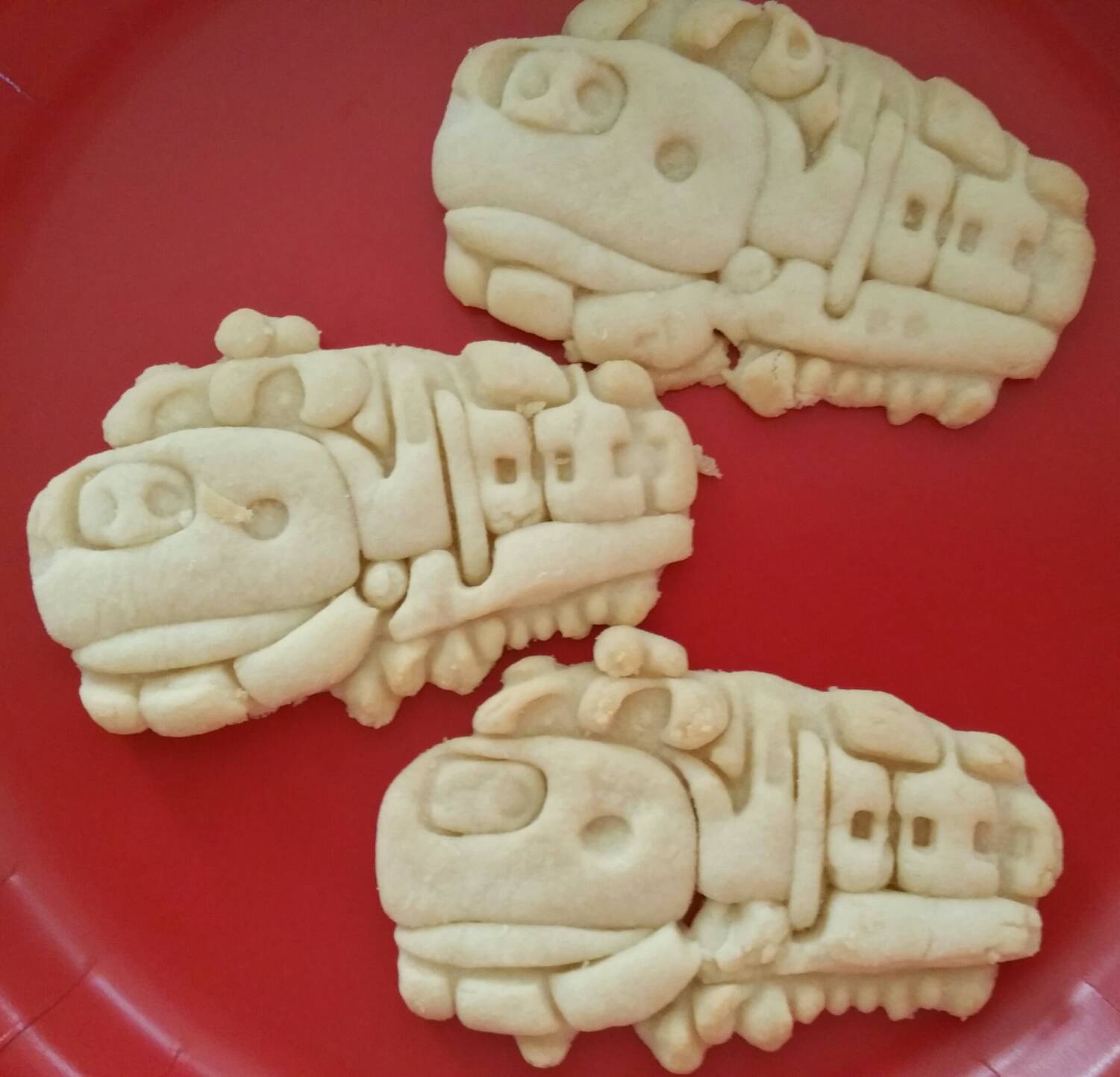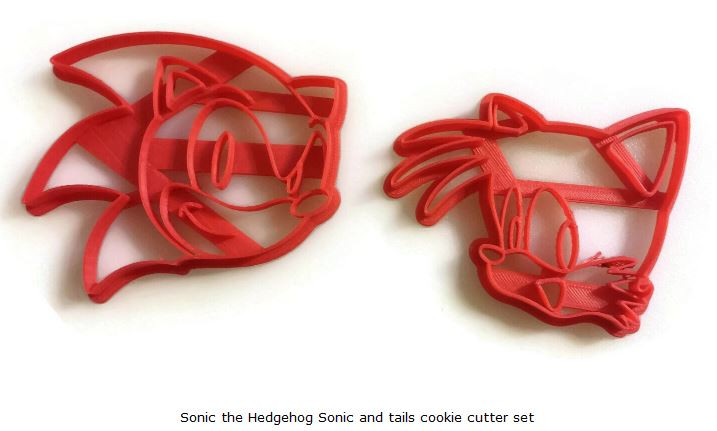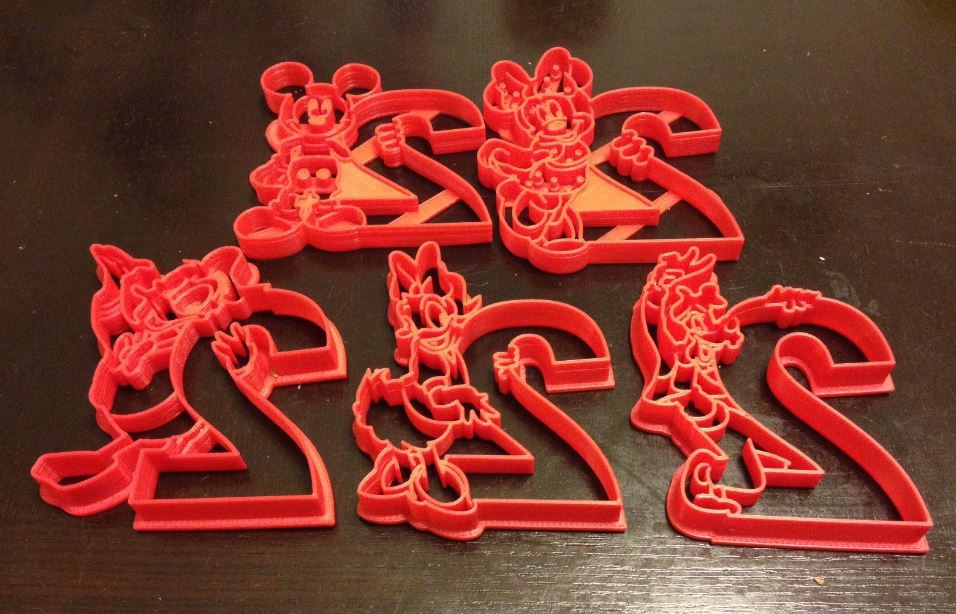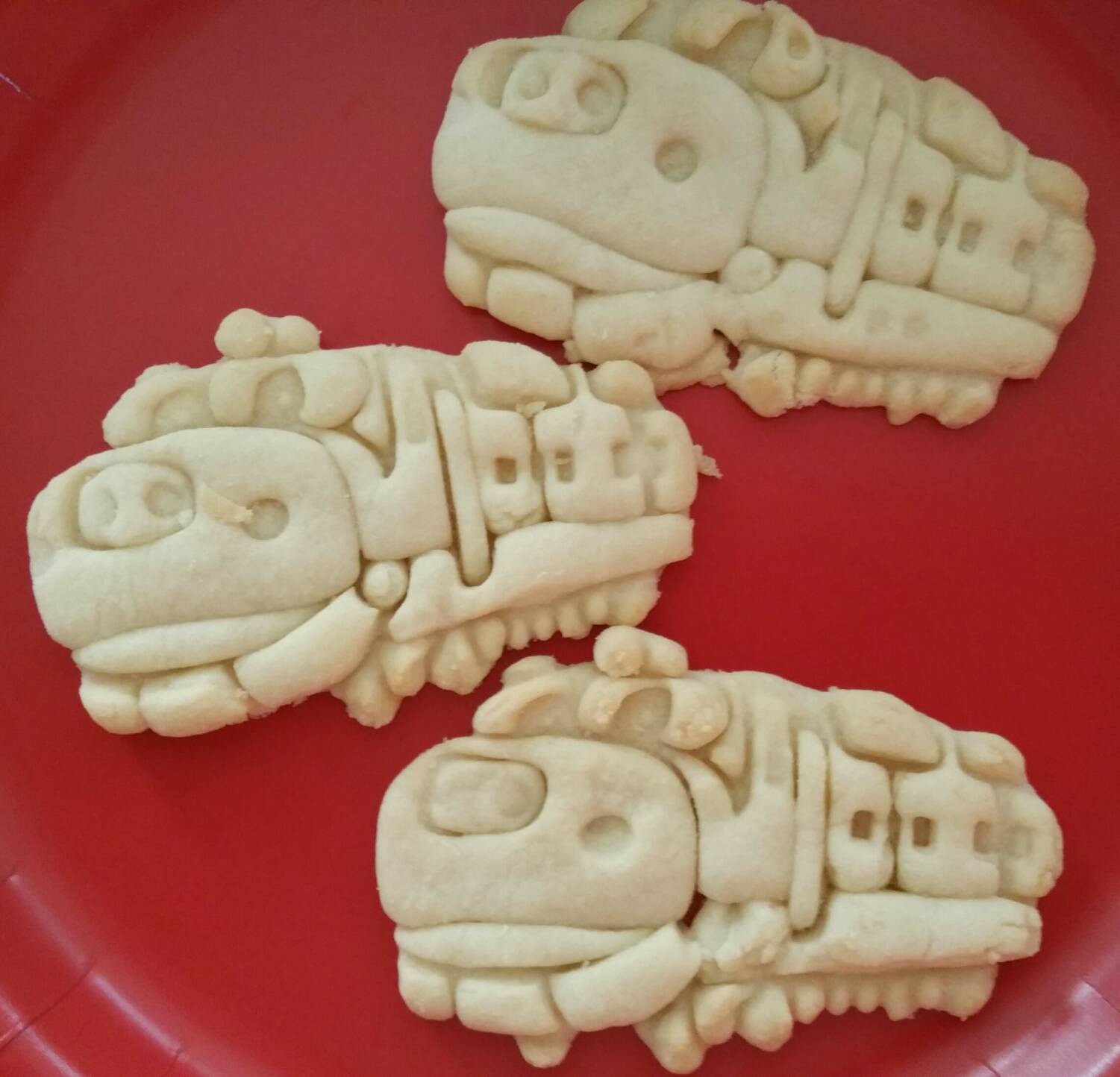
Non Sticky Cookie Dough Recipe
 So you may have been wondering if these custom cookie cutters actually make cookies with the details seen in the pictures. Admittedly it takes a little practice to be able to push the cookie cutters into the dough just right so you get the details while also being able to pull the cutter up without everything sticking. However, most people tend to use store bought cookie dough where you roll them out of a tube and cut. In many ways, these are either too thin, or too sticky. So we want to share a recipe we use ourselves. It makes dough that is not too sticky, and rises correctly to preserve the details.
So you may have been wondering if these custom cookie cutters actually make cookies with the details seen in the pictures. Admittedly it takes a little practice to be able to push the cookie cutters into the dough just right so you get the details while also being able to pull the cutter up without everything sticking. However, most people tend to use store bought cookie dough where you roll them out of a tube and cut. In many ways, these are either too thin, or too sticky. So we want to share a recipe we use ourselves. It makes dough that is not too sticky, and rises correctly to preserve the details.
What will you need:
- 3 cups flour
- 1 cup butter - we use organic unsalted butter at room temperature
- 1 cup sugar - also organic
- 1 large egg - preferrably cage free, organic if that makes sense for eggs
- 2 ounces cream cheese - we use organic cream cheese at room temperature
- 1 1/2 teaspoons baking powder
- 1 teaspoon pure vanilla extract
- 1/2 teaspoon almond extract
- 1/2 teaspoon salt
You're going to start by beating the sugar, cream cheese and the butter in a large mixing bowl. After a few minutes it should be light and fluffy. Then you add in the egg, vanilla, and almond extract.
In a separate bowl you can mix the flour, baking powder, and salt. As you beat the first bowl, gradually add the flour mixture from bowl 2. You'll notice the dough stiffening as you whip on.
Once the dough is light and fluffy, you can roll it onto a sheet about 1/2 inches thick or thicker. Our custom cookie cutters tend to be 1/2 inch deep so a little extra will help pull the cutters from the sheet. Separating into multiple sheets help fit it into the refrigerator and reduce the chill time.
Let them chill in the refrigerator for at least an hour.
Cutting the cookies out:
This is the one place where most people go wrong. Mastering detailed cookie cutters is an art, like playing an instrument. You probably won't get it right the first time, but a little practice and you'll figure it out. For detailed cookies, the most important things to remember are chilling the dough and pressing the cutter enough to make an impression, but not all the way through the dough.
The chilled dough should be cold, and hard enough to make it pretty hard to roll out. We use some plastic wrap, lay it on the dough ball, and roll it slowly with a rolling pin. It will end up being pretty thick - maybe half an inch or so. Then press the cutter slowly into the dough, but not all the way down. You want to just make the impression of the details, and not necessarily cut the cookie out. With the impression made, you can use any method you can to slowly shimmy the cutter up out of the dough. Sometime it means lightly lifting one corner, then lifting another, until you can get the cutter free.
You will definitely experience cuts where dough sticks to the cutter and you lose some details. Don't worry, this is normal and you will never notice in the end product. Sometimes you have to reconstruct the cookie a bit after cutting. Some small pieces can come off, but it's dough. You can just put it back together. When the cookies are baked, they rise a little and a lot of the imperfections just blend in.
Practice makes perfect. Please give yourself time to make a test batch and expect to mess up the first time. Chill and press only enough to make the impression. Those two rules are all it takes to master these awesome cookie cutters.
Officially we don't recommend freezing the dough, but if you must, wrap it in plastic wrap or a freezer bag and don't store it more than a month or so.
Baking the cookies:
Preheat the oven to 350 degrees. Use parchment paper on the baking sheets so they don't stick to the baking pans. Cook about 8 to 12 minutes. Sometimes up to 25 minutes or until the cookies start to turn a very clearly darker brown color. Thicker cookies will need a minute or two more, but you will figure out what works best for you the more you bake these cookies. After baking, let them cool for about 5 minutes before moving them to a cookie rack or heat tolerant plate. Let them cool thoroughly before decorating. If you don't cool them enough before moving them off the baking sheet, the cookies may break. If they're thoroughly cooled down, they'll be stronger.
And that's it. We make all our own dough because the results tend to be substantially better.






Leave a comment